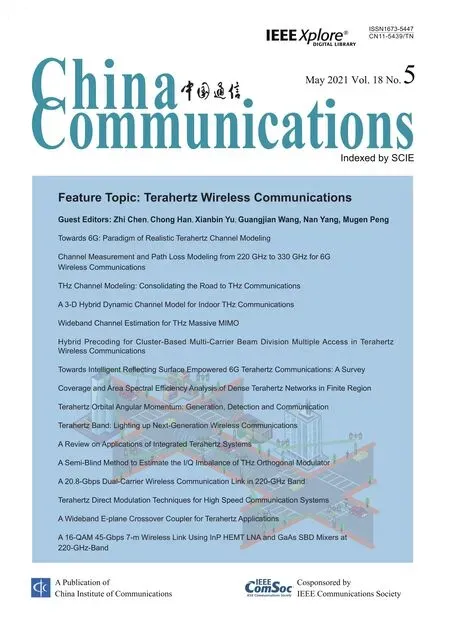THz Channel Modeling:Consolidating the Road to THz Communications
Shanyun Liu,Xianbin Yu,Rongbin Guo,Yajie Tang,Zhifeng Zhao
Zhejiang Laboratory,Hangzhou 311121,China
Abstract:For the sake of meeting the demand of data rates at terabit(Tbit)per second scale in future networks,the terahertz(THz)band is widely accepted as one of the potential key enabling technologies for next generation wireless communication systems.With the progressive development of THz devices,regrading THz communications at system level is increasing crucial and captured the interest of plenty of researchers.Within this scope,THz channel modeling serves as an indispensable and fundamental element.By surveying the latest literature findings,this paper reviews the problem of channel modeling in the THz band,with an emphasis on molecular absorption loss,misalignment fading and multipath fading,which are major influence factors in the THz channel modeling.Then,we focus on simulators and experiments in the THz band,after which we give a brief introduction on applications of THz channel models with respects to capacity,security,and sensing as examples.Finally,we discuss some key issues in the future THz channel modeling.
Keywords:terahertz(THz);channel modeling;survey;sixth-generation(6G);molecular absorption loss;misalignment fading;multipath fading
I.INTRODUCTION
Referring to the Edholm’s law,the bandwidth demand almost doubles every 18 months[1].With sharp growth of the demand of end-users for ultra-high data rate services in the recent years,the fifth-generation(5G)will not be sufficient to meet all the requirements in future generations[2-4].According to the prediction of the ITU,the demand of data rate in the wireless networks will even reach terabit(Tbit)per second by 2030[5].To target this,many studies have suggested that the terahertz(THz)technique is one of potential key enabling technologies in 6G[6-8].Indeed,the THz frequency band(0.1-10 THz)has the potential to carry information at a scale of terabit(Tbit,1Tbit/s=1000Gbit/s)[9,10].
The comparison between THz technology and several rivals such as millimeter-wave(mmWave),infrared,visible light,and ultra-violet,was discussed detailly in[11],which confirms that THz-wave serves as a good candidate in future communication systems,with wide application prospects in wireless backhaul,wireless local access,and the Internet of nano-things,etc[12,13].
Nevertheless,there are a lot of obstacles on the way to establish a Tbit THz wireless communication link.One of the main bottlenecks is THz device,especially in effectively generating THz signals.In last decade,a bunch of efforts have been placed to focus on the development of THz devices,and have definitely made great progresses based on photonic and electronic technologies[14-18].As a benefit,the research about THz communications at a system level recently attracts more and more attentions.Amongst them,it is worth noting that THz channel modeling is an indispensable and fundamental element in analyzing THz communications.
Since there is extremely large molecular absorption fading and reflection loss[19],it is not suitable to directly adopt the existing channel models in the radio/mmWave band for THz communication systems.One issue is that the energy of a THz wave can be easily absorbed by the atmospheric molecules,resulting in absorption peaks at resonant frequencies and making the THz frequency band split into several transmission windows[20].Usually,high gain antennas are widely needed in THz systems owing to the presence of severe path loss,leading to misalignment fading[21].Besides,the multipath fading in the THz band is also different from that in the radio/mmWave band[19].In fact,the spreading loss,molecular absorption fading,misalignment fading,multipath fading,as well as loss in the propagation pose huge challenges for THz channel modeling,as an excellent channel model is expected to take all of them into account properly and accurately.
Up to date,there have been a lot of review work on modeling THz channel.For instance,the reviews represented in[22-24]aim at presenting a comprehensive introduction of THz techniques,with a special attention to THz channel modeling and its applications.The THz channel is also described briefly in reviews like[25]by focusing on the channel model in 6G instead of the THz band.Besides,a larger number of literatures concentrate on channel modeling in a certain situation rather than doing comprehensive review,such as[26-28].In this sense,a systematic review on the THz channel modeling is expected to be of great importance for the THz communication community.
In this paper,we present an overview on THz channel modeling by surveying the latest literature findings,with an intension to provide crucial difference between this tutorial and the existing reviews.We hope this paper can timely generate knowledge on THz channel modeling by summarizing and analyzing the latest findings,and hence is interesting for researchers to find potential directions in this specific field.The contents in the existing surveys about THz channel modeling are listed in Table.1.
The remaining of this paper is organized as follows.In Section II,the significance and the basic methods of channel modeling is first provided.In Section III,key aspects concerning the loss in THz channel modeling is given in details,such as molecular absorption gain,misalignment fading,and so on.The simulators and experiments about THz channels are also introduced in this section.A brief introduction on applications of THz channel models is presented with respects to capacity,security,and sensing as examples in Section IV.In Section V,the key issues in the future THz channel modeling are also discussed.Finally,the paper is concluded in Section VI.
II.THE BASIC PROPERTIES OF CHANNEL MODEL
As we know,accurate and efficient wireless communication channel modeling plays an indispensable role in communication system design and performance optimization.This is due to the fact that we have to design the communication systems only by experience and experiment without channel models[31].Electromagnetic radiation from a transmitter to a receiver is the typical work pattern of a wireless channel,and the change of channel strength with time or frequency is its major characteristic[31].Roughly,channel modeling can be divided into two main classes:deterministic modeling and stochastic modeling[22].Deterministic modeling can be derived from the transmission equation of radio waves according to electromagnetic wave theory.It features a high accuracy as it is confirmed to agree well with the actual measurements.Generally,deterministic models are suitable for scenarios that require realistic channel data,such as vehicle-to-infrastructure(V2I)communications and an accurate prediction of coverage in network planning.Alternatively,the stochastic models were proposed to avoid complex and time-consuming modeling.In fact,it models a channel by extracting the statistical characteristics of a channel based on plenty of measurement data.By avoiding heavy dependency on the geometric knowledge of application scenarios,the stochastic channel modeling usually has high universality and low computational complexity,while with less accuracy as a penalty.Eventually,the pros and cons of each modeling method depend on application scenarios.In general,the performance of a channel model can be evaluated in terms of three aspects:accuracy,complexity and generality[25].An excellent channel model is expected to meet the best compromise between these three aspects.Therefore,in recent years,hybrid channel models have been proposed in order to take the advantages of both methods[23,32].For example,the deterministic strategy in a THz multi-pathenvironment is adopted in the dominant paths,while other paths use the stochastic model generally[23].
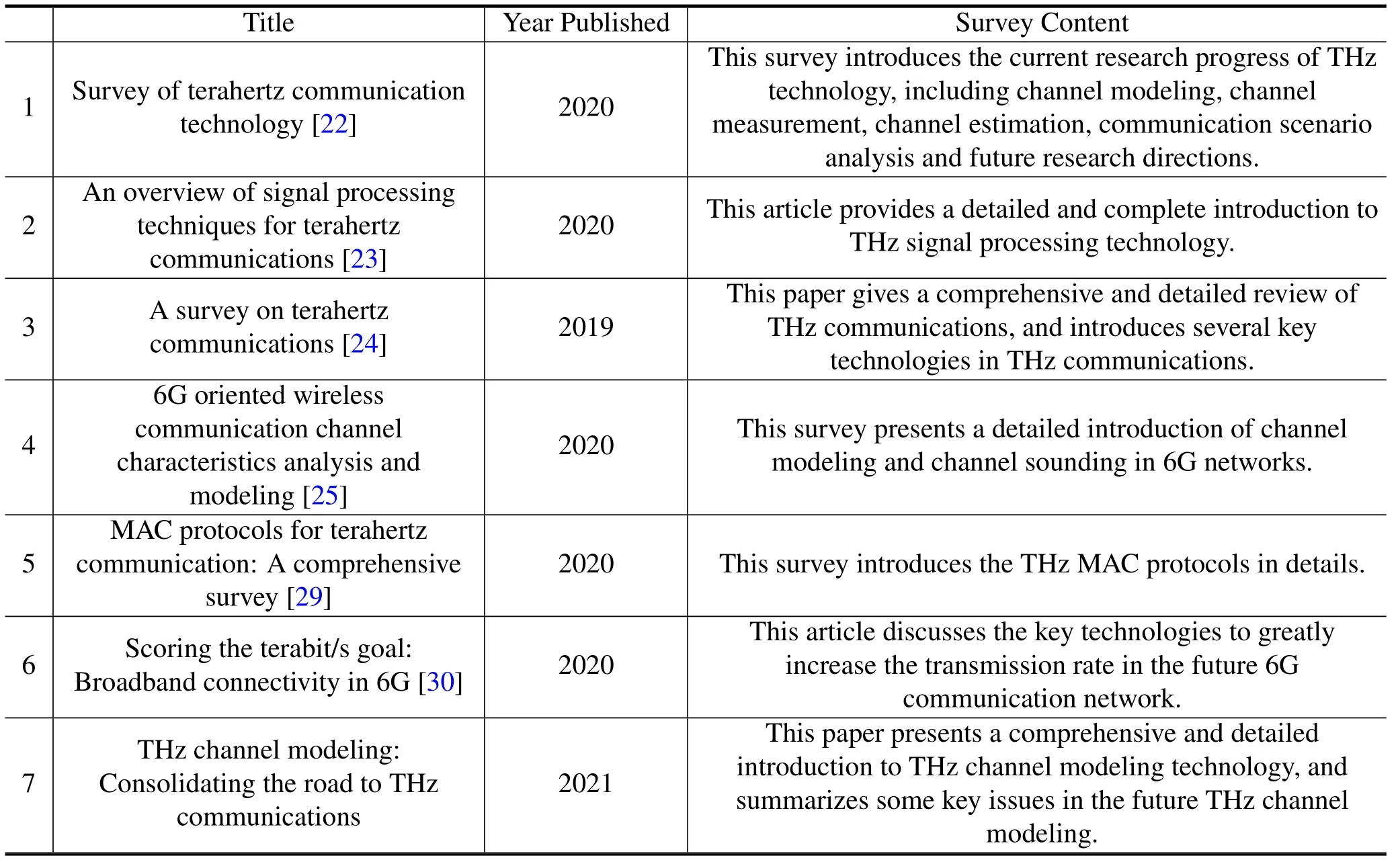
Table 1.The contents in existing surveys about THz channel modeling.
III.THZ CHANNEL MODELING
This section presents the THz channel modeling in details.Although,some channel model derived in the mmWave band can been used in the THz band in practice,such as Saleh-Valenzuela(S-V)model[33],there is a certain deviation in the high-frequency THz band.Generally,the current channel models in the radio/mmWave band are not suitable for THz communication systems,due to the exceedingly large molecular absorption fading and reflection loss[19].Roughly,the loss in a THz link can be divided into large-scale and small-scale fading.A lot of studies have examined the large-scale fading in THz channels,such as path loss[26]and shadow fading[34].The smallscale fading in the THz band was also studied in the past several years,with regarding to multipath fading[28].Also,the spatio-temporal characteristics are crucial attributes of channels.The authors in[35]proposed a THz stochastic model based on the temporal and spatial characteristics.In THz V2I scenarios,a geometric-based stochastic time-varying model was presented to analyze the non-linear temporal-spatial correlation in spherical wave propagation[36].Based on the measurement data in the 130-140 GHz band in an indoor environment,the temporal and spatial characteristics can be characterized by the log-normal distribution[37].
The main classification of THz channel models is shown in Figure 1.Since different parameters should be considerably taken into account in various THz communication scenarios,most of the research on THz channel modeling in the last decade examine the propagation model for a specific scenario.So far,the work on THz channel usually emphasizes outdoor channel models,indoor channel models and nanoscale channel models with the deterministic and stochastic approaches as stated earlier.
In this paper,we will provide classified discussions on the THz channel modeling based on the key aspects on loss.In general,a system model is given by
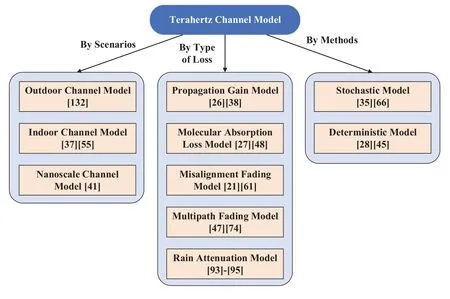
Figure 1.THz channel model classification.

wherenis the additive white Gaussian noise,andhis the channel coefficient,which is given by[26]

wherehp,hmol,andhmisdenote the propagation gain,the molecular absorption fading,and the misalignment fading,respectively.Besides,hwrepresents the effects of weathers,andhmulis the multipath fading.
3.1 Propagation Gain
According to the Friis equation,the propagation gain in the free space can be given by[38]

wherec,Gt,Gr,d,andfrespectively represent the velocity of light,the transmitting antenna gain,the receiving antenna gain,the transmission distance and frequency.
It is easy to check that the propagation gain in the THz band is much smaller than that in a radio band.Actually,such high spreading loss is a serious constraint to THz transmission[39].Since onlyGtandGrcould be increased by improving hardware component performance,and hence the high gain antennas become essentially important in developing THz systems in order to overcome the high spreading loss.
3.2 Molecular Absorption Loss
The molecular absorption loss is one of the main fading sources in a THz channel.The energy of electromagnetic wave can be absorbed by the atmospheric molecules,such as water vapor and oxygen[40].When the operation frequency is higher than 200 GHz,the molecular absorption mainly originates from the water vapor[26],resulting in several absorption peaks at resonant frequencies,which makes the THz frequency band split into several transmission windows,as shown in Figure 2.
According to the Beer-Lambert Law,the molecular absorption gain is given by[41]

where absorption coefficientk(f)can be calculated by

The total absorption coefficientk(f)is the sum of those for isotopologuei(i∈{1,2,...,Ni})of gasg(i∈{1,2,...,Ng})[41].Besides,Tandpare the temperature and the pressure respectively,whileTSTPandp0denote the standard temperature and the standard atmospheric pressure respectively.Furthermore,Qi,gandσi,gstand for the total number of molecules per volume unit and the absorption cross section of the given gas mixture.The computing methods or definition of these parameters are detailed in[41].
In actual calculation,we can usually extract these parameters from some specific database.In most studies of THz channel modeling,the high resolution transmission molecular absorption database(HITRAN)[42]is adopted.
However,the accurate computation of above models is quite complex and tedious.Recently,a simplified but fairly accurate model has been proposed to compute the molecular absorption loss in the 275-400 GHz band[27].In this model,the absorption coefficient is approximately written as

where
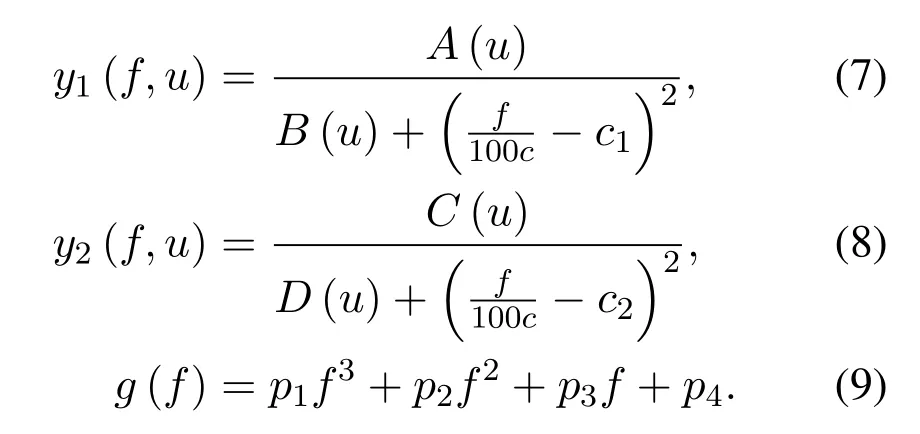
The evaluation expressions ofA(u),B(u),C(u),D(u)and the values of parametersc1,c2,p1,p2,P3,p4refer to[27].Besides,ustands for the volume mixing ratio of water vapor,and it can be evaluated as[27]

wherepwdenotes the saturated water vapor partial pressure,which is given by

Figure 2.Specific attenuation in the THz band according to the ITU[44].

according to the Buck equation[43].Besides,φstands for the relative humidity.
On this basis,the approximate formulas of transmission windows were also presented in[27].Actually,this simplified model has been used in lots of THz studies,such as channel modeling[45],performance evaluation[46]and reconfigurable intelligent surface(RIS)[47].Furthermore,the state-of-the-art work in[48]presented a novel simplified model for molecular absorption loss in the 100-450 GHz band,and exhibited six absorption peaks in this band,including 119 GHz,183 GHz,325 GHz,380 GHz,439 GHz and 448 GHz.
In fact,the atmosphere can affect THz communications in three ways[49,50].The first is to cause the atmospheric attenuation,or molecular absorption loss,which has been introduced detailedly in this part.Secondly,since the phase velocities and refractive indexes are different in different frequencies,the arrival time of waves in different frequencies will be different,which leads to the waveform broadening[51].This phenomenon is also known as atmospheric dispersion.Furthermore,the atmospheric turbulence refers to effects of the air motion and the inhomogeneous distribution of air parameters,which typically brings random fluctuations for THz signals[50].
3.3 Misalignment Fading
As aforementioned,high gain antennas are required and indeed widely adopted in THz systems owing to the presence of severe path loss.For instance,the corrugated conical horn antennas with gain of 55 dBi are adopted to achieve a 850 m link at 240 GHz[52].Since the antenna beam width is inversely proportional to the antenna gain,the THz systems usually need highly-directional and narrow beam width antennas[53].Nevertheless,the highly-directional antennas are extremely susceptible to the random motion of antennas,which originates in traffic,wind,and so on.As a consequence,it easily causes the problem of antenna alignment,and hence the pointing error is one of the paramount factors influencing the performance of THz wireless communications[21].
The relationship between reflectarray antenna gain and beam width was discussed in[54].Moreover,[55]suggested that the misalignments induced by the mobility user-end devices may result in severe deterioration of channel capacity and outages in THz wireless communications with highly-directional antennas,and[56]presented a mathematical framework to analyze this issue.In[57],the effect of antenna directivities on the THz links in indoor scenarios is examined.Besides,the authors in[58]put forward a misalignment model based on statistics,and suggest an optimum antenna configuration to minimize the transmission attenuation.Since the THz wave is quasi-optical[59],the study in[26]argued that the misalignment fading can be modeled from a pointing error model in freespace optical communications[60].After this statistical misalignment fading model is proposed,it has been used in many subsequent studies[47,61-63].
As shown in Figure 3,according to[26,60],the receiver’s effective area is assumed to be a circle with a radius ofa.Also,the beam of a transmitter is circle,and its radius changes with the distance.The radius at the distancedis denoted asρ,which meets 0≤ρ≤wdwherewddenotes the maximum radius of the transmission beam.Moreover,the antenna movements from building sways give rise to pointing errors between transmission and receiving beams[64].The radial distance between such beams is denoted asr.On this basis,a statistical model can be utilized to characterize the misalignment fading coefficient,which is approximated as
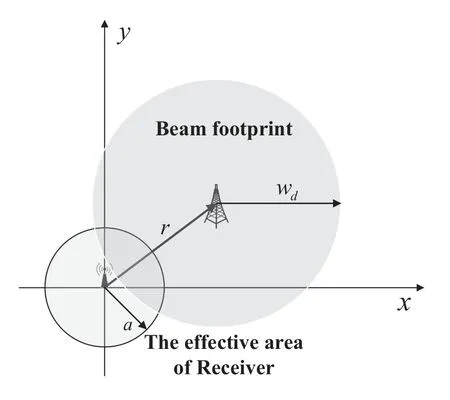
Figure 3.The effective area of receiver and the beam footprint with misalignment[26,60].

whereA0is the fraction of received power,which is determined by the radius of the receiver’s effective area and the maximum radius of the transmission beam at the distanced[26,60].Besides,weqdenotes the equivalent beam width.A0andweqare studied in details in[60].
As stated in the previous work[21,64],the random motion of antennas can be modeled as the Gaussian movement.Furthermore,assuming the elevation and the horizontal sways follow independent identical Gaussian distributions,the radial distance obeys a Rayleigh distribution[60].Therefore,the probability density function of the misalignment fading can be evaluated as

where the parameterγis the ratio between the receiver’s equivalent beam width and the radial displacement standard deviation[60].
Although the misalignment fading induced by highly-directional antennas triggers a drastic decrease of the received power[65],such as up to 13 dB power decrease for 20°tilts[66],it is still worth of rewarding for THz wireless networks with particular respects.
A quintessential example should be cited that a host of previous work claims that the security in the THz band has been improved compared to the lower frequency bands[67-69],due to the fact that an antenna of eavesdropper must be within the narrow beam of a transmitter.
In fact,the propagation gain and the molecular absorption loss are both deterministic variables,while the above misalignment fading is a random variable.However,if antennas move regularly rather than meeting random motion,the performance of stochastic misalignment fading models will be degraded.For example,in an eavesdropping scenario,the angle between the antenna of a legitimate user and that of an eavesdropper may be constant.In this case,an exact characterization of the misalignment fading is urgently needed.The impact of antenna directivity at 300 GHz is studied in[57]by means of a Gaussian beam model based on ray tracing(RT).So far,there is limited research investigating deterministic models of misalignment fading,and it is extremely meaningful to further construct a more comprehensive and accurate deterministic misalignment fading model in the future.
3.4 Multipath Fading
The multipath fading is definitely one of the key aspects,and it is of great significance to develop a novel multipath channel models for THz communications[19].In fact,the power difference between the lineof-sight(LoS)and non-line-of-sight(NLoS)is larger in the THz band than that in the mmWave bands[70].On average,when compared to the LoS path,the attenuation of the power of the first-order reflection path is larger than 10 dB,and that of the second-order reflection path is larger than 20 dB in the 275-325 GHz band in an indoor environment[35].Furthermore,according to the previous study,there are an exceedingly limited number of NLoS paths[33,71].Hence,THz channels are generally considered to be LoS-dominant and NLoS-assisted,and sensitive to obstacles[72].A lot of research on THz channels so far focuses on the LoS path,and neglects NLoS paths since the LoS path usually plays a decisive role in THz propagation,while a multipath channel should be considered in several specific scenarios,the indoor THz communication just as an example,since the multipath effects are often obvious in such limited spaces[73].
A lot of studies of THz multipath channels especially indoor channels,have been indeed done,and suggest that the S-V channel model[74]can be adopted for THz communications[33,63,75-77].Moreover,a 2-D geometrical propagation model for THz indoor scenarios was provided in[78].Based on RT,the authors in[28]discussed multipath channels in details,including the LoS,reflected,scattered and diffracted ray propagation schemes.To be more specific,the Kirchhoff theory[79],the modified Beckmann-Kirchhoff theory[80]and the Fresnel Knife Edge Diffraction theory[81]are used to characterize the reflected,scattered and diffracted paths,respectively.In[45],a new two-path channel model was proposed in the 275-400 GHz band,which is composed of the LoS path and one reflected path.In addition,the work in[82]presented an analytical model for a THz multipath channel,which analytically derives the number of multipath components and the probability of the LoS.
On the other hand,quite a few studies characterize the THz multipath fading by means of stochastic models.For instance,the authors in[66]presented a THz multipath channel model.According to[66],the firstorder statistics of its attenuation factor can be characterized by the Nakagami-mor Rician distribution in the LoS-dominant scenarios,while they should be described by the Rayleigh or Nakagami-mdistribution when there is no LoS path.In[26],theα-μdistribution[83]is suggested to model the THz multipath channel,and the channel capacity and outage probability are presented based on it.Very recently,the work in[47]stated that the fluctuating two-ray(FTR)distribution[84,85]can characterize the small-scale amplitude fading well,since the FTR distribution fits the measurement data much better than the Rician,Gaussian,Nakagami-mdistributions in the train-totrain scenarios at 304 GHz[86].
3.5 Hardware Imperfections
In THz high-rate communication systems,the radiofrequency(RF)imperfections,such as phase noise and in-phase and quadrature imbalance,are extremely harmful,and their effects cannot be neglected in these cases[87].According to the Bussgang theorem,such effects of the RF imperfections can be modeled by a complex Gaussian process[88].Since these hardware imperfections occur in both transmitters and receivers,two complex Gaussian noises are usually used to model them,which is written as[26]

where

and

denote the distortion Gaussian noises in a transmitter and a receiver respectively[89].According to[26],κtandκrstand for non-negative impairment coefficients,and we usePto denote the average transmitted power.So far,this model has been extensively used in analyzing THz communication systems[26,47,90-92].For example,a low-complexity channel estimator for THz communication systems is built based on it in[90].
3.6 The Effects of Weather
THz channel models is significantly affected by the weather.Rain attenuation is a quintessential example,which is caused by the absorption and scattering of raindrops.Recently,rain attenuation of a THz channel has been reported in outdoor rainy conditions[93-95].In fact,the attenuation through raindrops exists widely in a multitude of links when carrier frequency is above 10 GHz[40].Some estimation methods on rain attenuation were presented in[96].Recently,the work in[97]focused on the rain attenuation at 300 GHz,and it shows that the Mie scattering and the Weibull distribution are exceedingly suitable for calculating the wave attenuation through rain in this case,due to the fact that the results based on this model well agree with the measurement data.Usually,rain attenuation must be taken into account when modeling a channel above 100 GHz in beyond(B5G)or 6G[98].
Furthermore,the authors in[99]compared the effects of dry snow,sleet and rain on THz radiation based on Mie theory,and they stated that water vapor is the primary source of loss in dry snow condition.The actual measurement shows that there is about 2 dB attenuation at 200 GHz in 8 m of propagation during a snow fall[100].The effect of snow on THz links is also investigated in[101],which argues that the snow leads to higher loss than rain at a same fall rate.Foggy weather is another important factor,and the effect of fog on THz links has been reported in[102,103].In addition,the THz attenuation caused by dust increases with the dust cloud’s particle density[104].
It is noted that the effects of weather are relatively stable in comparison to other small-scale fading effects.Therefore,the activation of compensation measures in the THz communication transceivers could be a solution according to weather forecast.
3.7 The Effects of Scattering and Frequency Dispersion
Since the wavelength in the THz frequency band is at millimeter level or even less,the diffuse scattering is paramount in the THz channel modeling[28,105].Many previous studies have also focused on the effects of scattering on THz transmission[106-108].
Frequency dispersion is also a fundamental factor of channels,which is usually characterized by the Doppler spread.It decides whether the channel is fast fading or slow fading.A lot of literatures have examined THz channel modeling with taking frequency dispersion into account[109,110].Also,frequency dispersion is considered in a communication system at 300 GHz[111].Besides,authors in[35]proposed a stochastic indoor channel model in THz band with taking frequency dispersion into account.It is also noted that the cumulative distribution function of dispersion coefficient was shown in[35].
3.8 Other Channel Models
Recently,a THz channel model for aerial communications was first proposed in[112],since space-airground integrated network captures researchers’attention increasingly[113].It is noted that the authors in[112]consider the frequency-selective THz channel and the non-flat Earth geometry,and the numerical results indicate that the channel capacity may be up to 120 Gbit/s in this case.
Moreover,the novel multiplexing and coding of orbital angular momentum(OAM)waves provide a new degree of freedom to realize ultra-high capacity communication[114].The channel model of an OAM beam at 70 GHz was presented in[115],while an OAM multipath channel model based on uniform circle array in the mmWave band was reported in[116].Despite the increasing attentions on using the OAM technique in the THz band[117,118],the research on THz OAM is still underdeveloped due to the huge challenges in the generation and detection of THz vortex beam.Up to now,neither there is an OAM channel model confirmed by experimental data[25],and nor do a widely accepted OAM channel model exists in the THz band,to the best of the authors’knowledge.
3.9 Experiment and Simulator
In addition to theoretical analysis,the experimental measurements are essentially important to validate performance.To approach to this,channel sounding is inevitable,and the common techniques were briefly introduced in[119].The authors in[120]measured the actual path attenuation at 300 GHz in a data center,which verifies the feasibility of THz transmission in this scenario.Moreover,a short-range channel measurement experiment in 275-325 GHz was conducted in[121],and a THz channel measurement for kiosk applications by using a vector network analyzer was presented in[122].Besides,there are also some more experiments to analyze and validate THz channel models in[123-128].
Nevertheless,the measuring equipments in the THz band are generally extremely expensive,and the operating frequency range is usually below 400 GHz[25].Additionally,due to high directionality and path loss,only a few effective samples can be obtained in a single measurement[30].In this context,simulations as a supplemental understanding,are necessary and are more interesting before any actual costly and timeconsumable THz measurements,as what researchers do in the mmWave band[129].A quintessential example is the Cloud-RT[130],which intends to simulate,predict and model time-varying multi-input and multi-output(MIMO)channels in different frequency bands.In fact,the validity of the Cloud-RT is verified in an intra-wagon communication system at 300 GHz by the measurements obtained by the channel sounder[131].The Cloud-RT simulator has successfully supported lots of 5G applications,and the details can be found at http://cn.raytracer.cloud:9090/.Based on the RT simulator,a THz vehicle-to-infrastructure channel in sunny/rainy/snowy weather has also been investigated[132].
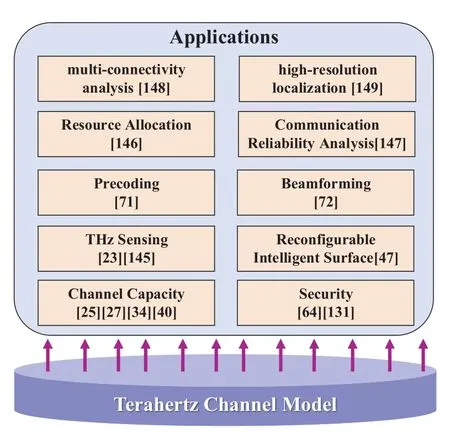
Figure 4.Applications of THz channel models.
IV.APPLICATIONS OF THZ CHANNEL MODELS
In this part,we will briefly introduce the applications of THz channel models,and the channel capacity and security are emphatically highlighted as key indicators with regard to supporting THz communications.Some typical applications based on THz channel models and their representative literatures are summarized in Figure 4.
4.1 Channel Capacity
As we know well,the fundamental metric of channel performance is channel capacity[31],which can be obtained based on channel models.Previously,the authors in[41,133]investigated a THz channel in electromagnetic nanonetworks.In such a model,the overall capacity of a wideband THz channel is the sum of channel capacities of all sub-bands,which are sliced from a broadband,but highly frequency-selective THz channel.On the basis of that,the wideband THz channel capacity in multipath was straightforward presented in[28],and the results show that the capacity of a THz multipath channel can be 4.8 times of that in a THz LoS channel.
Recently,based on the simplified molecular absorption fading model in the 275-400 GHz band[27],THz channel capacities in different transmission conditions have been examined.For example,when only the LoS light component is considered,the capacity for a channel in 275-400 GHz is given in[46],while the case counting one LoS component and one reflective component is presented in[45].Furthermore,when taking the misalignment fading and hardware imperfections into account,the ergodic capacity and the outage probability is also estimated with the multipath fading described by theα-μdistribution[26].This work aims at proposing a theoretical analytical framework for THz communication systems,and it claims that the descending order of the detrimental effects on channel capacity is hardware imperfections,misalignment fading and multipath fading.
In fact,there are occasionally few studies with intensions to reveal the capacity of a THz MIMO channel based on channel modeling.For instance,the channel capacity was numerically evaluated based on an ultra-massive MIMO channel model in[134].Based on a THz channel model presented in[135],the authors in[136]calculated the MIMO channel capacity using graphene-based MIMO antennas.
4.2 Security
Due to the explosive growth of user connections and wireless services,the security of next generation wireless network becomes prominently important.In viewpoint of the fact that THz technique serves as the next frontier of the future networks[19],the research on THz security is thereby exceedingly important and valuable.It is generally assumed that THz systems have a unique advantage in confidentiality attributed to its highly-directional narrow beam and short transmission distance[22].However,more and more recent literatures suggest that the THz eavesdropping is possible[69,137,138].
In fact,physical layer security is an effective solution to improve communication security,and it captures a great deal of researchers’attentions.The system secrecy capacity is a basic indicator of secure communications,relying on a channel model as well[139].Recently,by taking the multipath components into consideration and using the channel model in[41],the authors in[69]gave the eavesdropping probability and the secrecy rate in a typical urban scenario.In[138],the security of RIS aided THz communications was analyzed and improved by designing the beamformer and the phase shifters when the S-V channel model is adopted.Moreover,the security performance of RIS aided THz communications was also studied in[140]based on the integrated THz channel model in[141].
As one of key aspects of security,covert communications are also dependent on the propagation modeling.A new distance-adaptive modulation scheme for covert communications in the THz band was proposed in[142].To be more specific,the studies on THz channel suggest that the THz band can be split into several transmission windows with several absorption peaks at resonant frequencies as stated earlier.Based on it,[142]implemented covert communications with the aid of the high attenuation at absorption peaks.
4.3 Sensing
A high-frequency THz wave holds high photon energy and is quasi-optical[59].Similar to photons,it generates unique electromagnetic fingerprints when interacting with other substances,which is interesting for THz sensing application[23].So far,THz time-domain spectroscopy has been widely adopted in many THz sensing applications,such as art conservation,pharmaceutical industry and paper industry[143].Beyond,the convergence of THz sensing and THz communications is the trend of future development[144].In order to emulate and analyze a THz sensing system,the channel modeling in THz sensing is also crucial and necessary.The propagation of THz waves in sensing was preliminarily discussed in[145].Besides,the authors in[23]presented a channel model in THz gas sensing in the ultra-massive MIMO arrays-of-subarrays scenarios.Generally,the frequency of THz wave in sensing applications is high,but most of current channel models are derived in the low-frequency THz bands.Therefore,the research on channel modeling in THz sensing is inadequate yet,which is certainly worthy of in-depth study in the future.
4.4 Other Applications
Except the applications mentioned above,channel modeling in the THz band has been widely used in many areas as a basic approach for communications,such as RIS[47],precoding[71],beamforming[72],resource allocation[146],communication reliability analysis[147],multi-connectivity analysis[148],high-resolution localization[149],and so on.Thus,THz channel modeling is the cornerstone in supporting of THz research in this sense,and it is crucially important the development of THz technologies and their applications.
V.KEY ISSUES IN THE FUTURE THZ CHANNEL MODELING
In this part,we summarize the lessons of channel modeling learned in the past years,and then discuss some key issues in the future THz channel modeling in details based on channel performance evaluation.
As far as the accuracy is concerned,there is still a room for improving current THz channel models.For instance,although the THz wave is quasi-optical[59],errors are inevitable when a Gaussian beam model is adopted to characterize the misalignment fading in THz band.In addition,there is considerable reflection attenuation difference among different reflective materials for THz signals[22].Therefore,a THz multipath model taking reflective materials into consideration is more rational than current models.Furthermore,quite a few channel models in the THz band are derived from theoretical hypothesis,lacking experimental confirmations,especially above 400 GHz.
Generally,the stochastic channel modeling in the THz band is the basic method for complexity reduction,while less accuracy is the penalty.Indeed,stochastic models for misalignment fading,multipath fading,and hardware imperfections reduce the channel complexity to a certain extent.Besides,two simplified models for molecular absorption loss were presented in[27,48]to avoid high computational complexity of a comprehensive model in[41].However,these simplified models are so far fairly accurate in the 275-400 GHz band and the 100-450 GHz band.Therefore,it is of great significance to find simplified models for molecular absorption loss above 450 GHz.Since there is a trade-off between accuracy and complexity,a practical THz channel model should meet the best compromise between them.
Up to data,there has not yet been a widely accepted universal propagation model in the THz band[22].Most researchers model THz channels in terms of lowfrequency THz bands for a few specific scenarios.In the future,it is meaningful and challenging to find a widely accepted universal channel model in THz band,which can work well in various scenarios and multiple frequency bands.
With respects to the THz experimental verifications,limited by the currently available devices of channel sounding,most of THz experiments are carried out at around 300 GHz or below 450GHz[22,25].Usually,the deterministic models need measurement data for verification,and the stochastic models require measurement data for feature extraction.Since it is difficult to obtain measurement data above 450GHz,most of current studies focus on channel modeling in the low-frequency THz bands.As a consequence,the knowledge about THz channels is seriously inadequate in the high-frequency THz bands.Therefore,establishing channel sounding in high-frequency THz bands is one of the fundamental points in the future THz channel modeling.
VI.CONCLUSION
This paper provided an overview on THz channel modeling.We mainly presented the models and summarize the recent studies on propagation gain,molecular absorption loss,misalignment fading,multipath fading,hardware imperfections,as well as the effects of weather,scattering,and frequency dispersion.In addition,to further emphasize the significance of modeling THz channels,the applications of THz channel models were comprehensively reviewed considering capacity,security,and sensing as key performance indicators.Finally,we discussed some crucial issues in the future THz channel modeling based on channel performance evaluation.
By modeling the THz channel in a hybrid manner,THz channels have been well studied in terms of loss types and frequency bands,creating some outstanding models for a few specific scenarios.However,to the best of the our knowledge,there has not yet been a universal THz channel model.On the other hand,there is a serious lack of channel sounding at highfrequency THz bands,since most of THz experiments are done at around 300 GHz for verifications.Indeed,the channel modeling at high-frequency THz bands relies on the measurement data in such cases.Therefore,the main challenge of modeling THz channels in the near-future is to establish channel sounding at high-frequency THz bands.Besides,it is challenging to find a widely accepted standard THz channel model that can meet the great compromise among accuracy,complexity and generality,which is expected to be highly beneficial for the development of THz communications.
ACKNOWLEDGEMENT
This work is supported by Zhejiang Lab(no.2020LC0AD01 and no.2020LC0AA03)and the National Key Research and Development Program of China(2020YFB1805700,2018YFB1801500 &2018YFB2201700),in part by the National Natural Science Foundation of China under Grant 61771424 and the Natural Science Foundation of Zhejiang Province under Grant LZ18F010001.
- China Communications的其它文章
- Towards 6G:Paradigm of Realistic Terahertz Channel Modeling
- Terahertz Wireless CommunicationS
- Channel Measurement and Path Loss Modeling from 220 GHz to 330 GHz for 6G Wireless Communications
- A 3-D Hybrid Dynamic Channel Model for Indoor THz Communications
- Wideband Channel Estimation for THz Massive MIMO
- Hybrid Precoding for Cluster-Based Multi-Carrier Beam Division Multiple Access in Terahertz Wireless Communications

